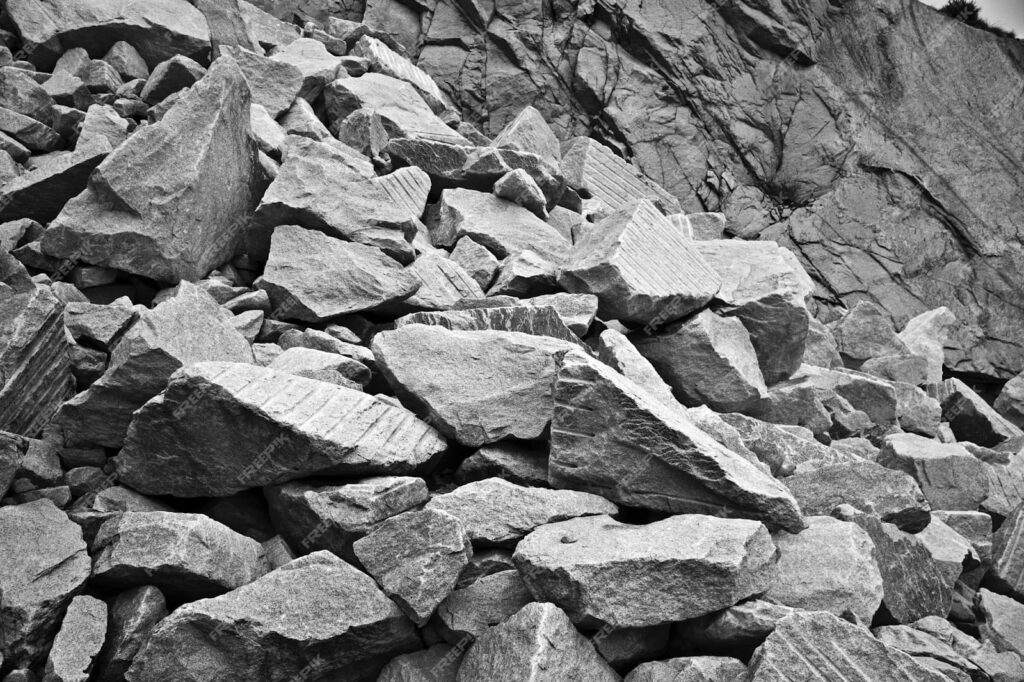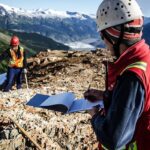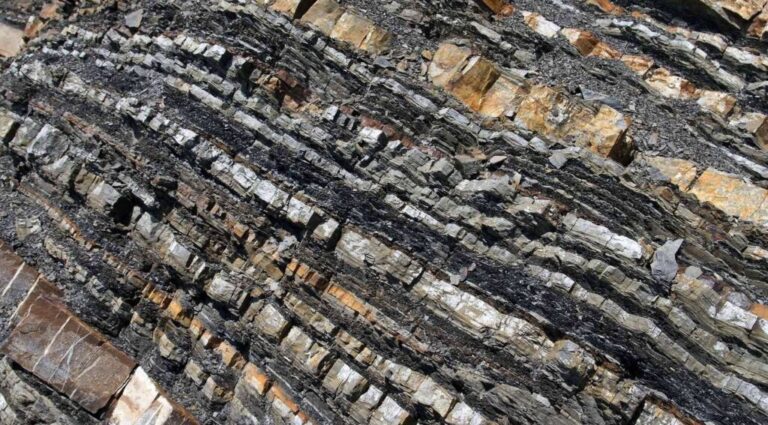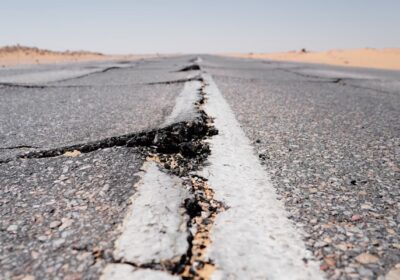
Exploring the Fundamentals of Rock Physics
Rock physics is a captivating field that delves into the study of the physical properties and behavior of rocks under various conditions. Understanding rock physics is crucial in several industries, including geology, petroleum engineering, and geophysics. This article will explore the intricate realm of rock physics, shedding light on its significance, applications, and key principles.
Exploring the Fundamentals of Rock Physics
Rock physics involves the analysis of different rock properties such as porosity, density, elasticity, and permeability. These properties play a vital role in determining how rocks respond to stress, pressure, and seismic waves. By studying these characteristics, experts can gain insights into the composition and structure of subsurface formations.
Importance of Porosity
Porosity refers to the amount of empty space within a rock, which affects its ability to store fluids like oil and gas. Rocks with high porosity are more likely to contain valuable hydrocarbons, making porosity a critical parameter in reservoir evaluation and exploration activities.
- Porosity can be classified into primary and secondary porosity;
- Measuring porosity accurately is essential for estimating reservoir capacity and flow characteristics;
- Different rock types exhibit varying porosity levels, influencing their suitability for resource extraction.
Significance of Elasticity
Elastic properties determine how rocks deform under stress and impact their seismic response. Young’s modulus, Poisson’s ratio, and bulk modulus are key parameters used to characterize the elastic behavior of rocks. Understanding these properties is crucial for predicting rock behavior during drilling and production operations.
- Elasticity helps in assessing rock strength, brittleness, and ductility;
- Seismic surveys rely on elastic properties to interpret subsurface structures and identify potential hydrocarbon reservoirs;
- Changes in rock composition and pore fluid content can alter the elastic properties of rocks significantly.
Role of Rock Physics in Geophysical Studies
Geophysicists utilize rock physics models to interpret seismic data and infer subsurface properties. By integrating geological knowledge with rock physics principles, experts can create accurate models that aid in reservoir characterization, imaging, and monitoring.
Seismic Wave Propagation
Seismic waves travel through rocks at different speeds based on their properties, allowing geophysicists to map subsurface structures and identify anomalies. Rock physics helps in understanding how seismic waves interact with rocks and how this interaction influences wave propagation.
- P-wave and S-wave velocities provide valuable information about rock stiffness and fluid content;
- Anisotropy in rocks can cause seismic waves to travel at varying speeds in different directions;
- Rock physics models help in calibrating seismic data and improving the accuracy of subsurface imaging.
Quantitative Interpretation Techniques
Quantitative interpretation techniques involve integrating rock physics models with seismic data to estimate reservoir properties such as lithology, porosity, and fluid saturation. These techniques enable geoscientists to make informed decisions regarding reservoir development and production strategies.
- Inversion methods help in converting seismic measurements into meaningful rock property estimates;
- Joint inversion of multiple data types enhances the resolution and reliability of subsurface models;
- Rock physics plays a crucial role in reducing uncertainties associated with seismic interpretation and reservoir characterization.

Applications of Rock Physics in Petroleum Engineering
Rock physics plays a pivotal role in reservoir characterization by linking seismic attributes to petrophysical properties. By analyzing seismic data in conjunction with well logs and core samples, engineers can delineate reservoir boundaries, identify fluid contacts, and estimate reservoir quality.
Petrophysical Modeling
Petrophysical modeling involves quantifying the relationship between seismic responses and reservoir properties such as porosity, permeability, and lithology. These models help in predicting reservoir behavior, optimizing well placement, and enhancing hydrocarbon recovery efficiency.
- Rock physics models assist in predicting fluid type and distribution within reservoirs;
- Integrating seismic attributes with petrophysical models improves reservoir characterization accuracy;
- Advanced modeling techniques enable engineers to simulate reservoir performance under different production scenarios.
Enhanced Oil Recovery (EOR)
Rock physics principles are instrumental in designing enhanced oil recovery strategies aimed at maximizing hydrocarbon extraction from reservoirs. By understanding how rocks respond to injection processes and fluid displacement, engineers can implement efficient EOR techniques to boost production rates.
- EOR methods such as water flooding and gas injection rely on rock physics insights to optimize recovery factors;
- Reservoir simulation studies leverage rock physics models to assess the feasibility and effectiveness of EOR projects;
- Monitoring changes in reservoir properties using rock physics helps in evaluating the success of EOR initiatives.
Drilling and Wellbore Stability
Rock physics considerations are vital in ensuring drilling operations proceed smoothly and safely. By analyzing rock mechanics and wellbore stability, engineers can mitigate risks associated with borehole collapse, formation damage, and fluid influx, enhancing overall drilling efficiency.
Wellbore Stability Analysis
Wellbore stability analysis involves evaluating rock properties, stresses, and drilling fluid interactions to prevent instability issues during drilling. Rock physics assessments help in designing optimal drilling practices, selecting suitable mud weights, and minimizing formation damage.
- Understanding rock failure mechanisms is crucial for maintaining wellbore integrity and preventing costly incidents;
- Rock physics models aid in predicting wellbore stability challenges in different geological formations;
- Real-time monitoring of drilling parameters combined with rock physics analysis enhances decision-making during drilling operations.
Formation Evaluation
Rock physics tools are utilized for formation evaluation to assess reservoir quality, identify pay zones, and optimize well completion strategies. By integrating logging data with rock physics models, engineers can make informed decisions regarding reservoir development and production planning.
- Wireline logging tools provide valuable data for rock physics analysis and reservoir characterization;
- Rock physics-based interpretation techniques help in distinguishing hydrocarbon-bearing zones from non-productive intervals;
- Formation evaluation workflows incorporating rock physics enhance the accuracy of reservoir property estimations.

Utilizing Rock Physics for Seismic Interpretation
Seismic inversion techniques leverage rock physics models to transform seismic data into quantitative representations of subsurface properties. By inverting seismic traces to estimate rock properties such as acoustic impedance and lithology, geoscientists can improve reservoir imaging and mapping accuracy.
AVO Analysis
Amplitude versus offset (AVO) analysis is a common technique used in seismic interpretation to detect subtle changes in rock properties. By analyzing amplitude variations with offset, geophysicists can identify hydrocarbon indicators, delineate reservoir boundaries, and assess fluid saturation levels.
- AVO attributes such as intercept and gradient provide insights into reservoir fluid content and lithology;
- Rock physics principles guide the interpretation of AVO anomalies and their implications for reservoir characterization;
- AVO inversion techniques help in deriving quantitative reservoir property estimates from seismic data.
Elastic Impedance Modeling
Elastic impedance modeling involves calculating the product of seismic velocity and density to characterize subsurface lithology variations. By applying rock physics relationships to seismic data, geoscientists can generate elastic impedance volumes that aid in reservoir attribute mapping and prospect evaluation.
- Elastic impedance volumes highlight lithological contrasts and structural features within subsurface formations;
- Rock physics calibration improves the accuracy of elastic impedance predictions and enhances geological interpretations;
- Integrating elastic impedance attributes with seismic attributes enhances the resolution and detail of subsurface models.
Seismic Attribute Analysis
Seismic attribute analysis involves extracting quantitative features from seismic data to identify geological structures, stratigraphic patterns, and fluid anomalies. Rock physics concepts play a crucial role in interpreting seismic attributes and relating them to subsurface properties for effective reservoir characterization.
- Common seismic attributes include amplitude, frequency, coherence, and curvature, which provide valuable insights into subsurface geology;
- Rock physics-based workflows help in correlating seismic attributes with reservoir properties and lithological variations;
- Machine learning algorithms combined with rock physics models enhance the automation and accuracy of seismic attribute analysis.
Conclusion
In conclusion, rock physics, which elucidates the significance of formations such as shale—emphasizing its meaning in the geological context—stands at the intersection of geology, geophysics, and engineering. This discipline offers a profound understanding of subsurface formations, including the complex behavior of shale reservoirs, and reservoir behavior overall. By unraveling the intricate properties of rocks, including the unique aspects of shale, and their interactions with seismic waves, experts can unlock valuable insights that drive efficient exploration, production, and reservoir management practices in the oil and gas industry. As technology advances and interdisciplinary collaborations flourish, the future of rock physics holds immense promise for revolutionizing energy exploration, enhancing reservoir recovery rates, and advancing the sustainable future of the global energy landscape. This promising horizon is particularly relevant for shale resources, which are pivotal in the current energy paradigm.

















